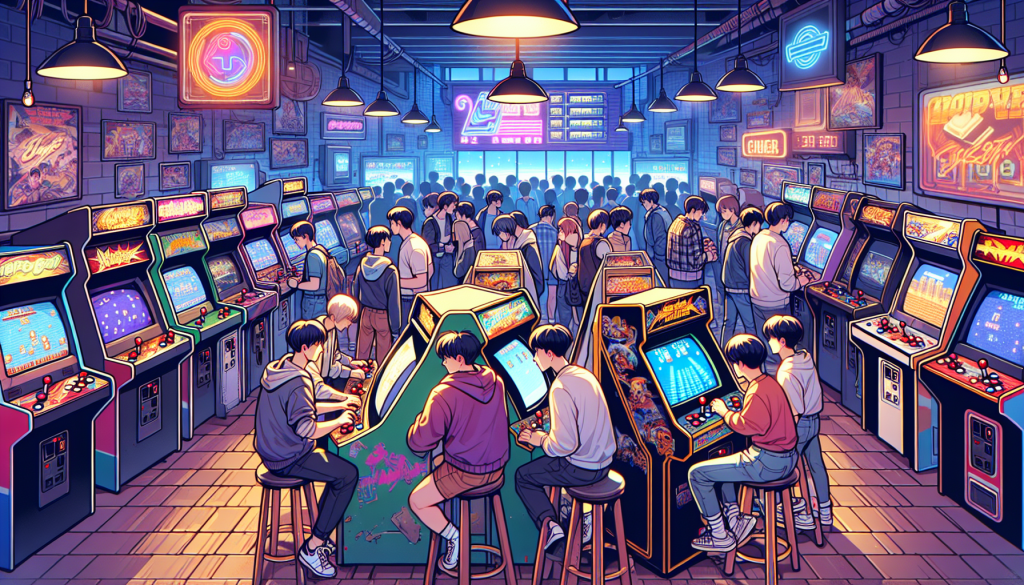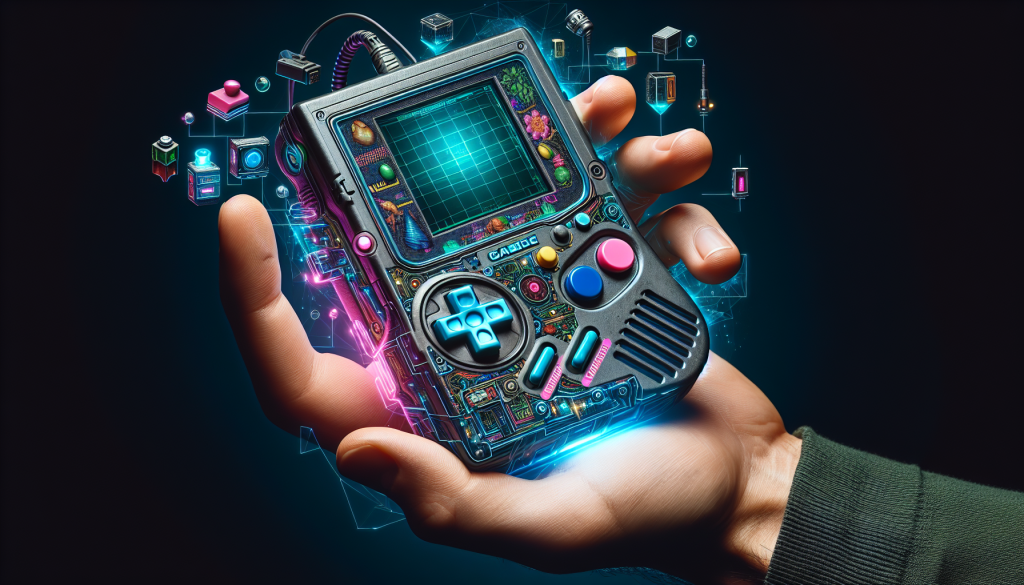Understanding the Appeal of Retro-Inspired Video Games
Ah, retro-inspired video games. They have a special place in the hearts of many gamers, young and old. There’s just something captivating about the pixelated graphics, chiptune soundtracks, and simple yet addictive gameplay. But why do these games continue to hold such appeal, even in an era of stunning visuals and immersive experiences? Let’s dive in and explore the magic behind retro-inspired video games.
One of the key reasons retro-inspired games have endured is nostalgia. Whether you grew up playing classic games on the Nintendo Entertainment System or experienced them through the emulators and re-releases, these games evoke a sense of fondness for a bygone era. They remind us of simpler times when gaming was a shared experience with friends and family, gathered around a console or arcade cabinet.
But it’s not just nostalgia that draws us in. Retro games often possess a charming simplicity that can be refreshing in today’s complex gaming landscape. They strip away the layers of intricate mechanics and convoluted storylines, focusing instead on the core gameplay elements that made classics like Super Mario Bros and Pac-Man so enjoyable. There’s a certain satisfaction in mastering the straightforward controls and honing your skills to achieve high scores or complete challenging levels.
Another aspect of retro-inspired games that appeals to many players is their accessibility. Unlike some modern games that require hours of investment to understand complex systems and mechanics, retro games are easy to pick up and play. They provide instant gratification and can be enjoyed in short bursts or longer gaming sessions, making them perfect for casual gamers or those with limited time.
Now, you might be wondering how game developers can recreate the magic of retro games in a modern context. Well, it’s all about striking the right balance between nostalgia and innovation. Incorporating nostalgic elements into modern game design is a powerful way to capture the essence of classic games while adding fresh twists.
For example, indie game developers have been successful in creating pixel art and chiptune soundtracks that pay homage to the aesthetics of old-school games while infusing them with their own creative ideas. This fusion of old and new breathes new life into the genre and keeps players engaged.
Moreover, leveraging modern development techniques can enhance the retro experience. Advances in technology allow for smoother gameplay, improved graphics, and seamless online connectivity. These enhancements don’t compromise the nostalgic feel but rather enhance it, making the game feel more polished and enjoyable.
So, if you’re a game developer or simply a lover of retro-inspired video games, don’t be afraid to embrace the allure of nostalgia. Learn from the classics, but also bring your own unique ideas and innovations to the table. Find that sweet spot where nostalgia and innovation meet, and you’ll create an experience that captures the hearts of gamers old and new.
Incorporating Nostalgic Elements into Modern Game Design
Imagine stepping into a time machine and being transported back to the heyday of classic video games. The pixelated graphics, catchy chiptune music, and simple yet addictive gameplay are enough to evoke a strong sense of nostalgia in anyone who grew up playing these games. It’s no wonder that retro-inspired video games have been making a comeback in recent years, appealing to both veteran gamers and a new generation of players.
But what exactly is it about these vintage games that captivates us? Why do we find ourselves drawn to the familiar sights and sounds of a bygone era? The answer lies in the emotional connection and fond memories that these games evoke. They transport us back to simpler times, when gaming was a pure form of entertainment.
Incorporating nostalgic elements into modern game design is a delicate balancing act. Game developers need to capture the essence of the retro experience while still providing a fresh and innovative gameplay experience. By studying and understanding the appeal of classic games, designers can create new games that pay homage to the past while pushing the boundaries of what is possible in the present.
One way to incorporate nostalgic elements is through the visual design of the game. Pixel art, the art style popularized by classic games, has made a resurgence in recent years. Its simplicity and charm serve as a reminder of the early days of gaming. By embracing this art style, developers can instantly transport players back in time while still delivering a visually appealing experience. It’s a win-win situation that caters to both nostalgia and modern tastes.
Another important aspect to consider is the music and sound design. Chiptune music, characterized by its synthesized and electronic sound, is closely associated with retro gaming. By incorporating chiptune-inspired soundtracks into modern games, developers can instantly transport players back to the era of arcade machines and console classics. These catchy tunes are not only nostalgic but also help create an immersive and memorable gaming experience.
Of course, nostalgia alone is not enough to sustain a game. It’s important to strike a balance between honoring the past and incorporating new and innovative gameplay mechanics. By combining familiar elements with fresh ideas, developers can create a game that appeals to both nostalgia-driven players and those seeking something new.
Building on the foundations of classic games, modern developers have access to advanced technology and development techniques that can enhance the retro experience. From improved graphics and animations to smoother controls and intuitive interfaces, these advancements can make the gameplay feel more polished and enjoyable. By leveraging these modern tools, developers can create a seamless retro experience that feels both familiar and refined.
Incorporating nostalgic elements into modern game design is a labor of love that requires a deep understanding of what made classic games so special. By capturing the essence of the past while embracing innovation, developers can create games that resonate with players on a nostalgic level, while still offering a fresh and exciting gaming experience.
3. Balancing Nostalgia and Innovation in Retro Games
When it comes to retro-inspired video games, there is a delicate balance between nostalgia and innovation. On one hand, players are drawn to the familiar sights and sounds of classic games from their childhood. On the other hand, they also want to experience something new and exciting that pushes the boundaries of what those old games could do. So how can game developers strike the perfect balance?
First and foremost, it’s important to understand what exactly makes a game “retro.” It’s not just about pixel art and chiptune music, although those elements can certainly contribute to the nostalgic feel. Retro games are often characterized by simple mechanics, challenging gameplay, and a focus on player skill rather than flashy graphics. They evoke a sense of nostalgia by tapping into the emotions and memories associated with playing games from the past.
However, simply recreating the past is not enough to create a successful retro-inspired game. It’s important to inject a dose of innovation to keep players engaged and interested. This can be done by adding new gameplay mechanics, expanding on the original concept, or incorporating modern technology to enhance the overall experience.
One approach is to reimagine classic game genres with a modern twist. Take the platformer genre, for example. While the core mechanics of jumping and navigating obstacles may remain the same, adding new power-ups, level designs, and even multiplayer options can bring new life to a beloved genre.
Another way to balance nostalgia and innovation is to incorporate elements from different eras. This can be done by combining the pixel art aesthetic of the past with modern visual effects, or by blending retro gameplay mechanics with contemporary storytelling techniques. By striking this balance, developers can create a game that feels both familiar and fresh.
It’s also important to listen to the player community and understand their expectations. Nostalgia can be a powerful force, and there may be certain features or mechanics that players associate with retro games. By incorporating these elements, developers can tap into that nostalgia and create a game that resonates with the intended audience.
However, it’s equally important to push the boundaries of what retro games can be. Innovation is key to keeping the genre alive and relevant. This can involve experimenting with new gameplay concepts, taking inspiration from other art forms such as music or film, or leveraging the latest technologies to create a truly immersive experience.
In conclusion, balancing nostalgia and innovation is the key to creating successful retro-inspired video games. By understanding the appeal of retro games, incorporating nostalgic elements, and leveraging modern development techniques, developers can create games that resonate with players while also pushing the boundaries of what those games can be. So whether you’re a fan of classic games or just curious about the retro gaming scene, there’s never been a better time to dive into the world of nostalgia and innovation.












